History of Abortion
Below is a timeline of key points in the history of abortion in the U.S. plus articles, books, and videos that provide more details.
1910s
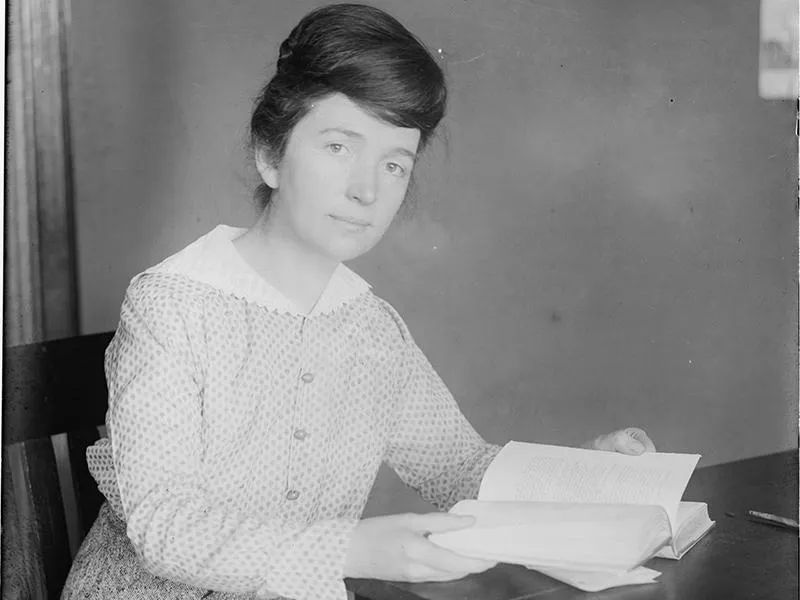
Margaret Sanger
Library of Congress, Prints & Photographs Division [digital ID: ggbain.20859]
"No, that's abortion. We don't want that. Birth control is different."
Margaret Sanger
Autobiography of Margaret Sanger
1910s
1916
Margaret Sanger opened the first birth control clinic, which was in Brooklyn, NY and later became the infamous Planned Parenthood.
Margaret Sanger was a eugenicist who promoted birth control to prevent those people she deemed undesirable from reproducing—that is, she was racist. However, she did not promote abortion, and Planned Parenthood did not get into the abortion business until after she passed away. Read the notes under 1969 and 1970 for more information.
1914-1918
(World War I with the U.S. entering in 1917)
“No, that's abortion. We don't want that. Birth control is different.”
Margaret Sanger
Autobiography of Margaret Sanger
1920s-1950s

photo by the National Park Service, cropped
Ev'ry one stops to admire the scene,
Rosie at work on the B-Nineteen,
She's never twittery,
nervous or jittery,
Rosie the riveter.
"Rosie the Riveter" by Redd Evans & John Jacob Loeb, 1942
1920s-1950s
1920s
1920 Nineteenth Amendment ratified, granting women the right to vote
(Roaring '20s)
1930s
(1930s Great Depression)
1940s
(1939-1945 World War II with the U.S. entering in 1941)
1950s
(1950-53 Korean War)
(1955-75 Vietnam War)
1955-1968
(Dr. Martin Luther King, Jr. led the Civil Rights Movement)

photo by the National Park Service, cropped
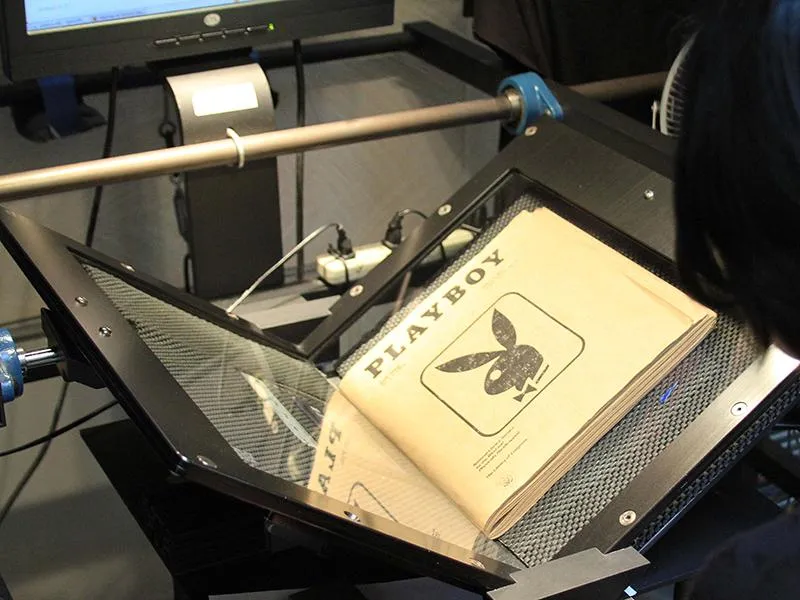
Jason "Textfiles" Scott, CC BY 2.0 via Wikimedia Commons, cropped
1960s
1955-1968
(Dr. Martin Luther King, Jr. leading Civil Rights Movement)
1955-1975
(Vietnam War)
1960
Hormonal birth control was marketed.
1960s & 1970s
Free Love Movement in which "hook ups" became popular long before "hook up" was a term.
1963
(Dr. Martin Luther King Jr.'s "I Have a Dream" speech and Pres. John F Kennedy assassinated)
1965
Contraception became legal in all 50 of the United States (Griswold v. Connecticut).
1966
Margaret Sanger died at age 86.
1967
Colorado decriminalized abortion under certain circumstances. California, Oregon, and North Carolina enacted similar laws.
1968
(Dr Martin Luther King, Jr. assassinated)
1969
In 1969, NARAL (which at that time stood for National Association for the Repeal of Abortion Laws) lobbied for legal abortion. Dr. Bernard Nathanson was one of the founders. He had treated women who had tried to perform their own abortions and wanted to end the self-mutilation.
According to Dr. Nathanson, Planned Parenthood was invited by NARAL to partner in lobbying for legalized abortion. Planned Parenthood declined.
“The sexual revolution completed the sexualisation of women.”
Sheila Jeffreys
Anticlimax: A Feminist Perspective on the Sexual Revolution
1970s
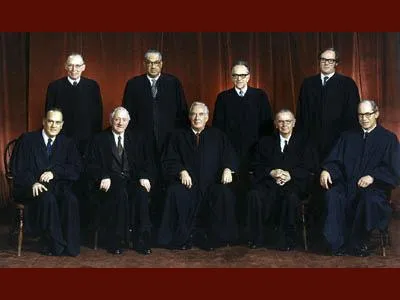
front: Potter Stewart, William O. Douglas, Warren E. Burger (Chief Justice), William Brennan, Byron White; back: Lewis F. Powell, Thurgood Marshall, Harry Blackmun, William Rehnquist
1973 Supreme Court Justices
“What if we were wrong?”
Dr. Bernard Nathanson
Atheist & Co-Founder of NARAL, OB/GYN, turned pro-life
1970s
1970
In 1970, abortion was legalized in Hawaii, New York, Alaska, and Washington.
According to Dr. Nathanson, women flooded into New York for abortions—Planned Parenthood saw how much money could be made and then changed their minds and joined NARAL in their lobbying efforts.
1971
Washington, DC legalized abortion.
1972
13 states decriminalized abortion under certain circumstances.
1973
January 22, 1973, Roe v Wade and Doe v Bolton effectively legalized abortion in all 50 states.
Later 1970s
After Roe and Doe, the ultrasound machine became more widely used. Dr. Nathanson saw a baby on an ultrasound machine and asked, "What if we've been wrong?" He became pro-life because he saw that pre-born babies were not just a clump of cells. Although Jewish by birth, Dr. Nathanson was an atheist by faith.

1973 Supreme Court Justices
front: Potter Stewart, William O. Douglas, Warren E. Burger (Chief Justice), William Brennan, Byron White; back: Lewis F. Powell, Thurgood Marshall, Harry Blackmun, William Rehnquist
1980s
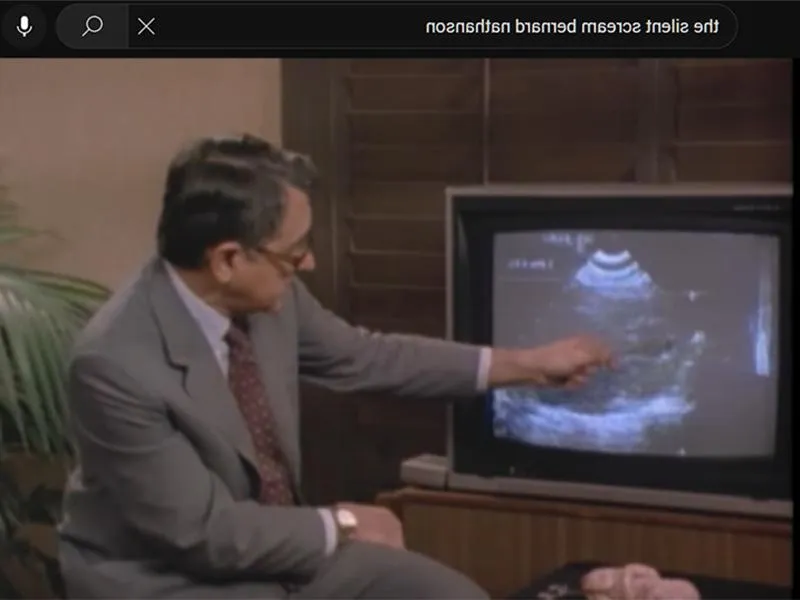
Dr. Bernard Nathanson
"The Silent Scream"
“We can see the child moving rather serenely in the uterus. The child senses aggression in its sanctuary. We see the child's mouth wide open in a silent scream.”
Dr. Bernard Nathanson
"The Silent Scream"
1980s
1984
Dr. Nathanson filmed, "The Silent Scream," which you can find on YouTube. So, the "clump of cells" argument is over 50 years old and disproved by the ultrasound machine.
Dr. Nathanson remained an atheistic Jew until he converted to Catholicism in 1995.
“We can see the child moving rather serenely in the uterus. The child senses aggression in its sanctuary. We see the child's mouth wide open in a silent scream.”
Dr. Bernard Nathanson
"The Silent Scream"
2020s

“If HR 3755 passes the Senate, it won’t matter if the Supreme Court overturns Roe v Wade.”
Cheryl Krichbaum
LifeSite, Dec 2, 2021
2020s
2020
September 18, 2020, Supreme Court Justice Ruth Bader Ginsburg passed away.
October 27, 2020, Amy Coney Barrett began her service as a Supreme Court Justice.
2021
The incorrectly and deceptively named Women's Health Protection Act was introduced to the U.S. House of Representatives and sent to the Energy and Commerce Committee. On September 24, it passed the House and was sent to the Senate.
RELATED: LifeSite Dec 2, 2021: "Pro-life women unmask evils of ‘reproductive justice’ bill in US Senate amid Roe hearings"
2022
February 28, 2022, the U.S. Senate voted not to proceed with the Women's Health Protection Act. (The vote was not seen much in the news.)
May 2, 2022, a draft opinion by the Supreme Court about the Dobbs v Jackson case that would ultimately overturn Roe v Wade was leaked to the public.
May 11, 2022, the U.S. Senate voted not to proceed with the Women's Health Protection Act. (The vote was covered widely by the news.)
June 24, 2022, the Supreme Court ruling on Dobbs v Jackson Women's Health Organization overturned the previous Roe and Casey rulings, sending abortion laws back to the individual states.

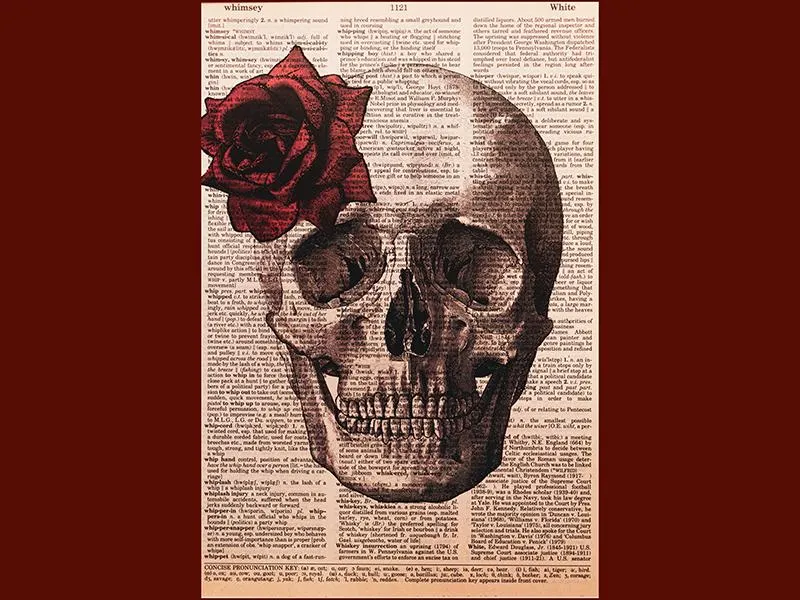
More Links on the History of Abortion

“We...thought, back then, that few abortions would ever be done. It’s a grim experience, going through an abortion, and we assumed a woman would choose one only as a last resort. We were fighting for that 'last resort.'”
Frederica Mathewes-Green
National Review
More Links on the History of Abortion
by Barnard Nathanson.
Dr. Nathanson, "The Abortion King," was one of the founders of NARAL. He was a critical part of the marketing machine that resulted in New York making abortion legal in 1970. He became pro-life when he saw a baby moving via ultrasound. He became pro-life first and later converted from atheism to Catholicism.
by the Washington Post Fact Checker
by Live Action & Lila Rose
by Carole Novielli, Live Action
by Frederica Mathewes-Green, National Review
At the time of the Roe v. Wade decision, Ms. Mathewes-Green was "a college student—an anti-war, mother-earth, feminist, hippie college student.

© 2022-2025 MybodyMyworship & Cheryl Krichbaum. All Rights Reserved. | Terms & Conditions | Privacy



